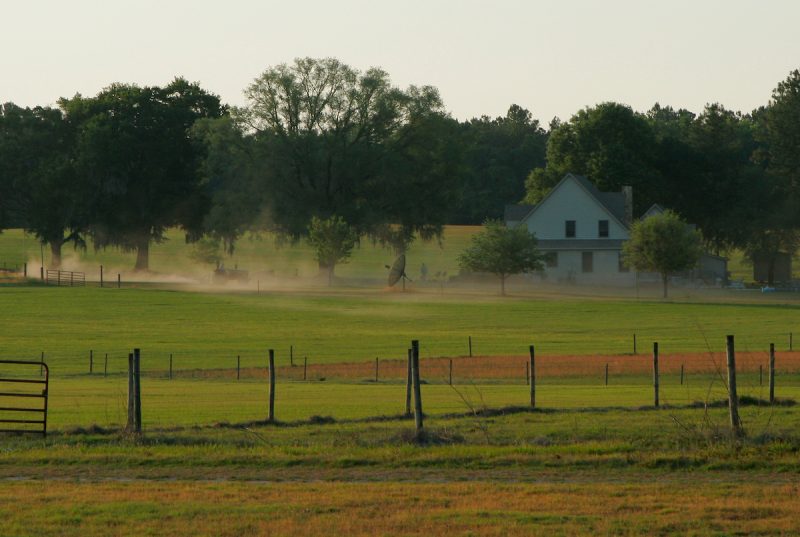
Ideally a farm would generate every year, but generating enough income to cover expenses and pay down debts is still building farm equity. Credit: Thomas Wright, UF/IFAS
Kevin Burkett, Clemson Agribusiness Program Team: Southern Ag Today – June 5, 2024
It may seem that barely covering expenses with little positive net farm income means a business is “treading water.” Ideally, a farm would generate revenue that exceed total expenses each year, and have cash and other resources to reinvest into the business. However, agriculture can be highly variable from farm to farm and year to year. Reaching incremental financial goals can help producers hit economic targets and minimize risk. To think of financial well-being as a ladder, the bottom rung is financial loss, and the highest rung is maximum profitability. Each rung that is attained is a higher position and further away from financial harm.
It may not be flashy, but a farm that can generate enough revenue to break-even and pay down debts has indeed climbed several rungs on the financial ladder. It may not afford much extra cash or the ability to expand the operation, but the business is still making progress. To think of the equation total farm assets – total farm liabilities = farm equity, covering all variable and fixed expenses means the farms equity is continuing to grow. Over time, the owner(s) continue to own more of the business until an ownership change or business dissolution. Either way the owner has accrued increased net worth over time.
Of course, there are other items that impact total farm assets or total farm liabilities. Asset values can change from year to year. In some cases, they could be quite volatile depending on the valuation method. For discussion, we’ll assume an adjusted cost basis with no major adjustments. Fixed asset accounts can decrease because of depreciation, but we assume this expense is a fixed cost of the business. Liabilities are useful and, in some cases, necessary, but a farm taking on unnecessary liabilities can tip the scales away from the owner, allowing creditors to own more of the operation. Liabilities such as bank loans allow the business to leverage resources to increase production, profitability, efficiency, and other measures. If the farm incurs a liability but the increase in assets is greater than the liability + interest over time, then it will add to the farms’ equity. It’s not always possible to understand the impact of a decision right away, it may take several cycles before seeing the resulting change in farm equity. For an asset purchase with a loan, the initial impact on equity will likely be zero. $100,000 farm asset increase – $100,000 farm liability increase = $0 change in farm equity. However, the influx of cash resulting from the asset’s productivity, allowing the business to cover the depreciation of the item, interest, and debt payments, can have a positive impact on farm equity.
It is important to consider context, too. A farm with successive losses but is now at break-even would seem to be making progress. A farm that has had big years but is now at break-even could signal a downward trend, or it could be merely a speedbump resulting in a short-term modest return. In general, a business that is paying down debts is contributing positively to farm equity and adds financial resiliency to the business. Should the operation need to borrow again in the future, end up with a financial loss one year, or eventually sell out, the farm will be in better financial position because of the previous farm equity contributions made.
- Federal Estate Tax and Gift Tax Limits Announced For 2026 - December 19, 2025
- Why Do I Have So Many Open Cows? Causes of Reproductive Failure - December 19, 2025
- Wiregrass Cotton Expo Offers Resources, Research, & Real Solutions for Growers in Southeast – January 22 - December 19, 2025
